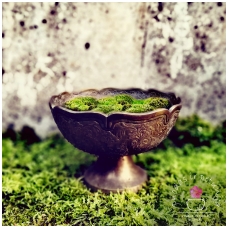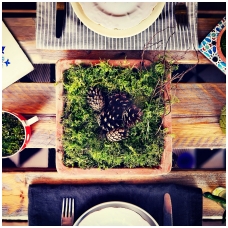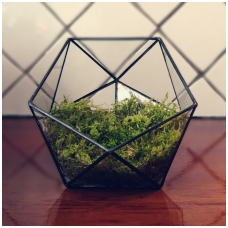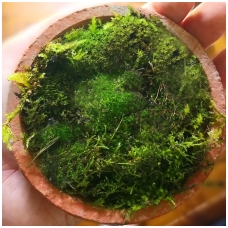So quiet and peaceful can only be moss!

This time about our local, North European mosses and their cultivation peculiarities.
Regardless of the subspecies, all are not so easy to tame (especially when you really want to), slow-growing and easily overrun by other plants - they can also be successfully grown according to a few simple rules.
This time about our local, North European mosses and their cultivation peculiarities.
Regardless of the subspecies, all are not so easy to tame (especially when you really want to), slow-growing and easily overrun by other plants - they can also be When trying to place mosses on a surface you like, you need to press them quite well. You can do this with the palm of your hand if you are trying to attach moss to a stone, use a fishing line for temporar tightening. The surface must also be as flat as possible - smoth out and press well. Mosses can be moved by humps for better catching on, but can also be separated into smaller pieces for faster coverage of the desired surface. The soil for moss does not matter at all, it may be any, very little or even non-existent (in this case a sharp, uneven surface is required).
Although mosses love moisture, it is easy to overwater them. Moss recently moved from other surfaces should be watered or sprayed daily, depending on the season and other circumstances. Mature mosses can survive for long periods of time without watering. When ultra-long periods of drought happen they enter into a state of lethargy - fade, stop growing and wait for better times. Therefore, if your moss has rooted, their watering should be unfrequent. For small areas of moss, use a sprayer. For large areas once they are up, watering is not necessary at all, unless they are under the roof or during the drought. Most moss species require shade, but they withstand a few hours of sunshine.
We have noticed that when growing moss at home for a long time, it is better to bring them outside in the winter, where they are exposed to natural rainfall, or, in the case of a balcony, at least several times in the winter to cover them with snow. If you decide to bring your moss home for the winter (for example, decorating a Christmas table) for a while, they will surely endure it. If you use moss to highlight the beauty of other plants by covering them with substrate, these forest queens are unlikely to be happy with it and will eventually decay, especially during winter. This is because moisture, sunlight and other conditions are adjusted to the larger plant, not the moss. In this case, we suggest using either dried mosses or a separate moss nursering plate, where you will grow mosses you like, which you will swap with "tired" every once in a while.
If your mosses are in competition with other plants and you get tired of tweezing them, take advantage of the strengths of your mosses - they really don't need good soil, most species don't need that soil at all. They require an uneven, spongy, slightly damp accumulating surface, terracotta or concrete, and some stones fits them perfectly. And they can last for a long time without moisture - most plants won't really like it unless your moss is attacked by cacti :)



